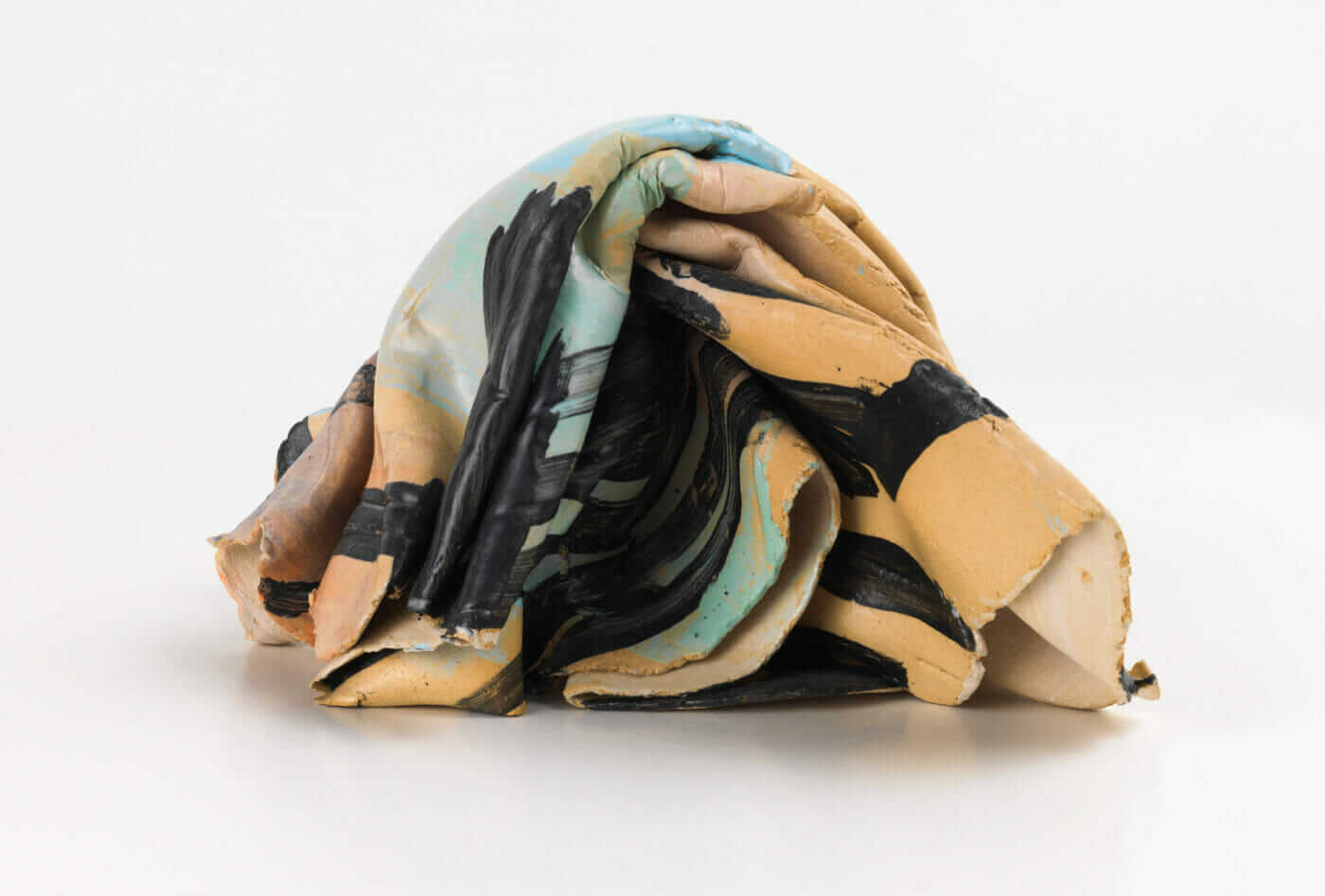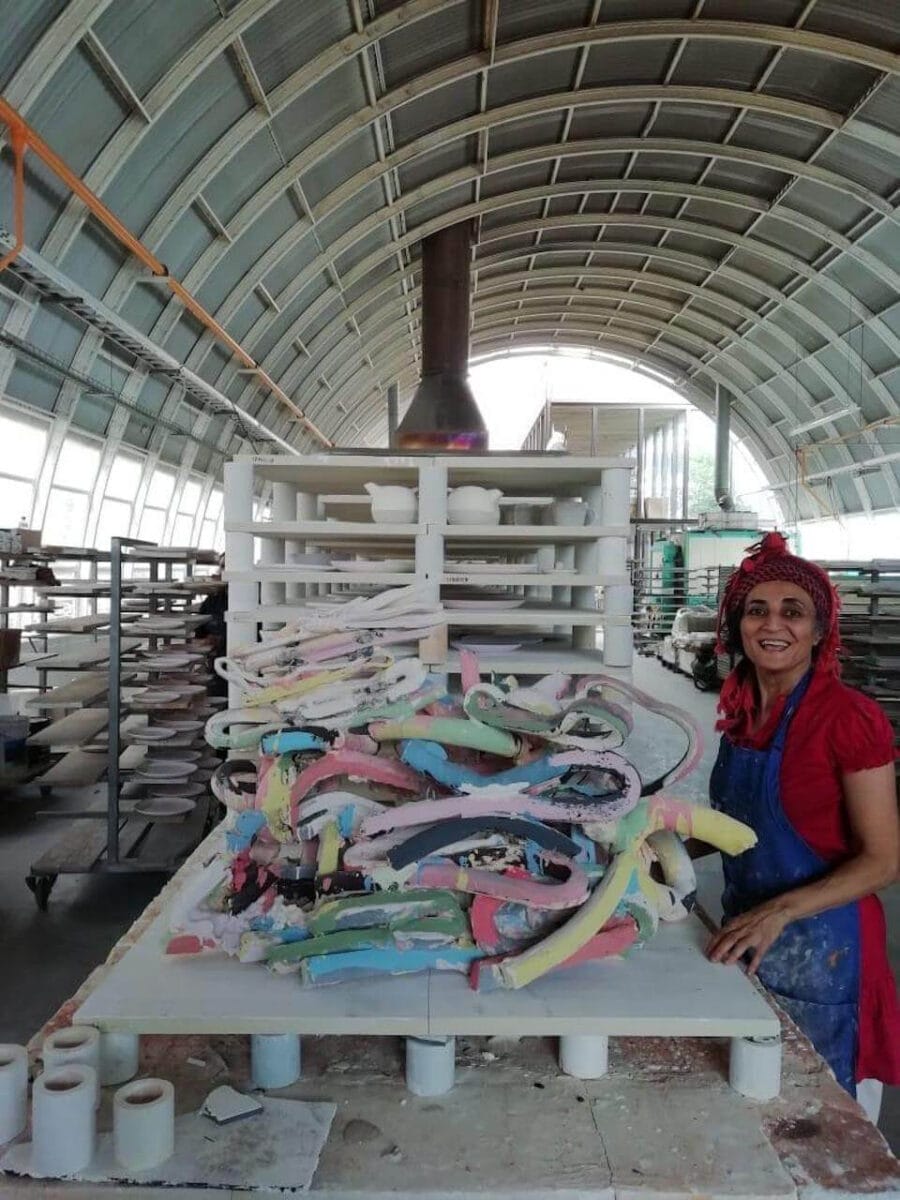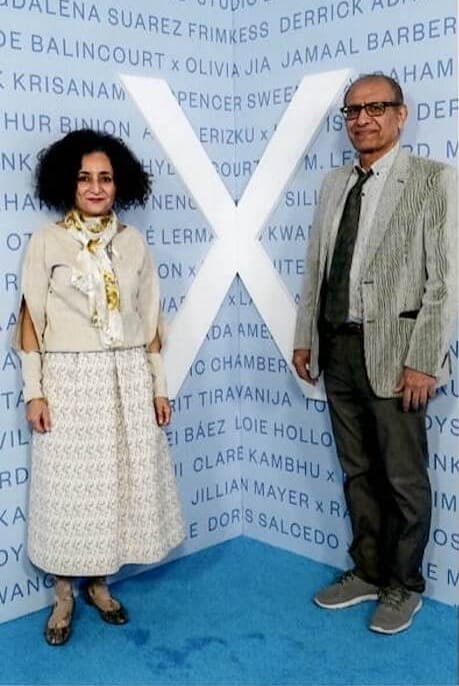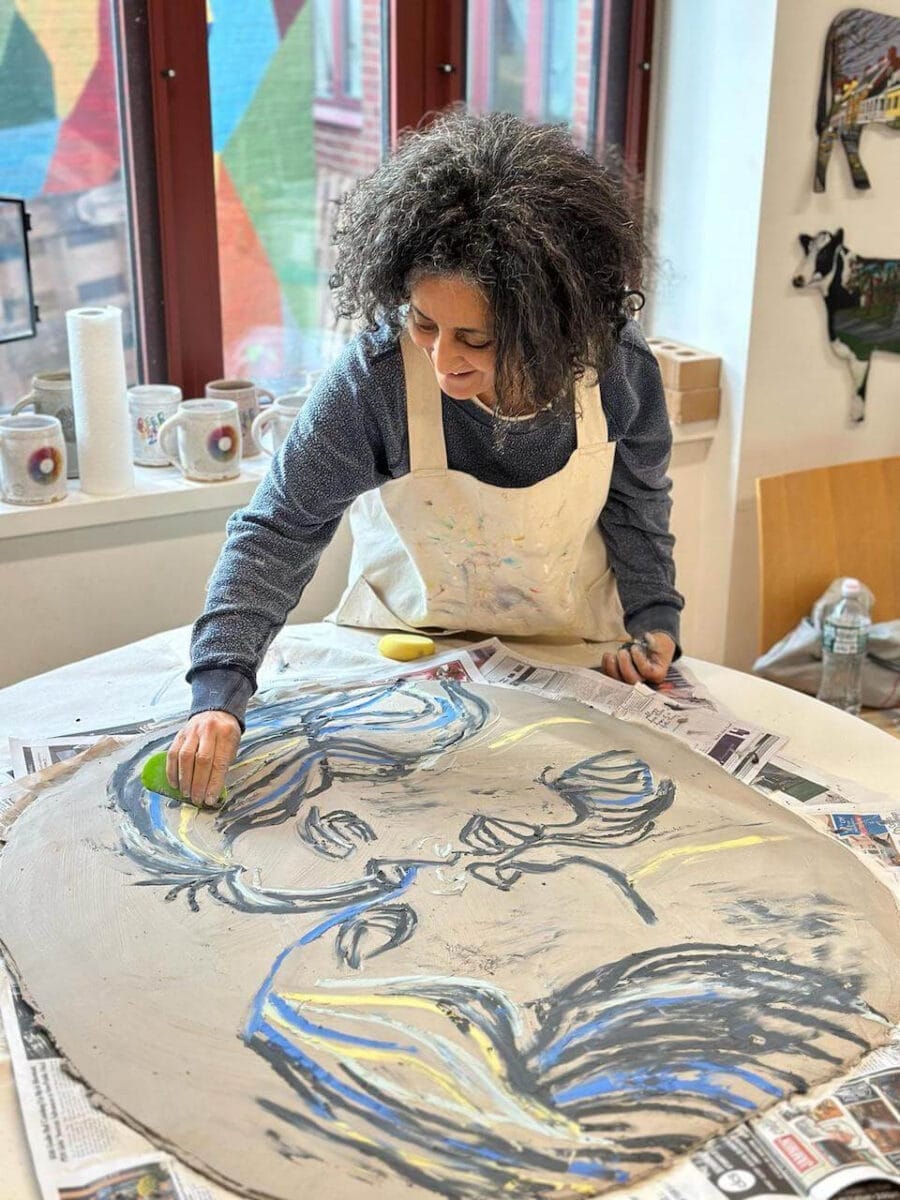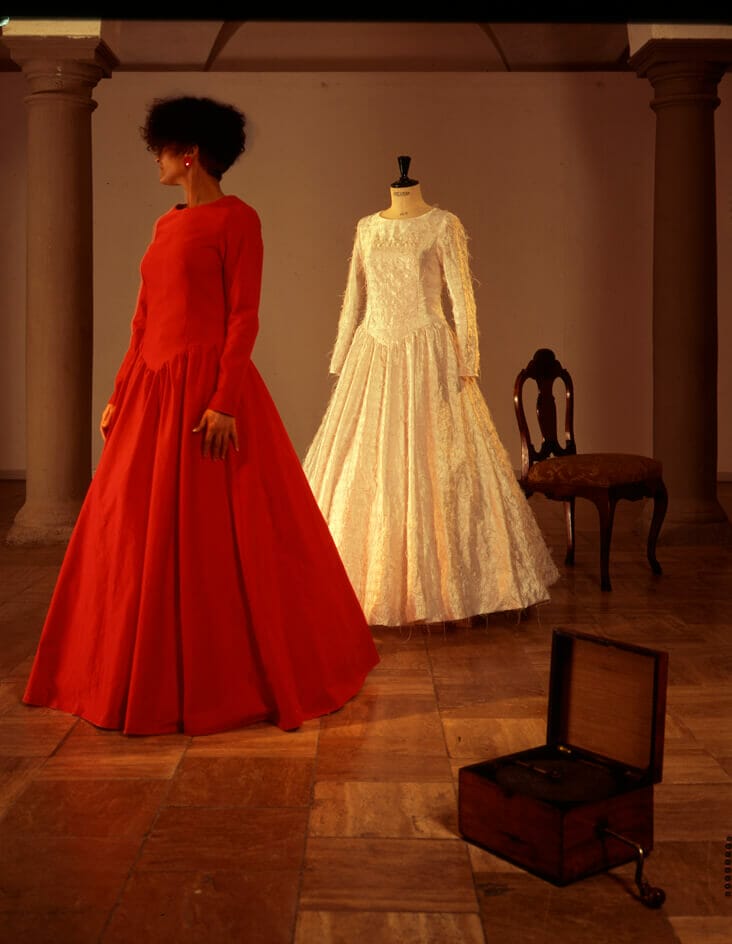In a garden, slithering in the grass, small snails quickly cowl back into their shells. They are hiding, perhaps from a predator or from curious children. Many of us would have shared this experience in our youth, many of us would have picked up those small spiraled and folded shells. As we grab it, we begin looking for the hidden snail. In the children’s game, the material of the shell but also its folded form provide the snail’s shelter. Hiding in the shell, hiding in its folds.
What’s in Ghada Amer’s Hiding, literally? What is hiding from us? We can talk about what we see, describe its form, what the sculpture looks like and discuss the materials used to make it. In other words, we can talk about its form. As for the content, what the work itself is about, that remains a mystery. Figuring out the topic of the work is not that simple.
In terms of form, Ghada Amer’s Hiding is a small ceramic sculpture. We see an ebb covering various folds. All the work’s surfaces are irregular. As the eye skims the work, it never sits still, possibly looking for something hiding under the folds. Hiding is part of Ghada Amer’s early venture in ceramics. Together with Portrait en Vert,Tâche Orange (2014) and Homage à Chamberlain (2015), they were created by means of folded slabs of clay. What sets Hiding apart, however, is how it engages folding. In other words, folding is not only the topic of the work, it is also its form.
While Hiding might seem like an amorphous sculpture, it is actually a volume whose concave features are created by rich folds. The importance of the folds in this sculpture and their expressive presence are evocative of what Deleuze explores in his The Fold: Leibniz and the Baroque (1993). Folds have the ability to help us discern and examine the inside; they also interact with various materials like ceramics in this case. The ceramic in Ghada Amer’s work expresses itself through the form of the fold.
Paint plays also a significant role in this sculpture. We see various patches of blue, orange and black as well as what seems to be black lines. These lines, owing to the creased and folded nature of the sculpture, cannot be traced from beginning to end. By painting on the clay slab, one can say that Ghada Amer uses the clay as a canvas, and that her palette is made of porcelain. Once the coloured ceramic flat slab is folded, the painting itself is folded into the sculpture.
The folds, the paint and the ceramics work together to produce the sculpture. More particularly, the folds produce concave structures which appeal to both hiding and Hiding. Ghada Amer’s folds fall not only under the work’s form but also express its meaning. Only by taking into account the relationship between hiding, folding and painting, can we begin to understand the content and topic of Amer’s Hiding. The folded painting becomes, by means of the expressive folds, also the hidden painting.
So what’s in Hiding? Ghada Amer’s painting goes into Hiding!
References:
Gilles Deleuze. The Fold: Leibniz and the Baroque. Trans Tom Conley. London: The Athlone Press, 1993.

